Introduction
In the realm of child development, few approaches have garnered as much attention and endorsement as Applied Behavior Analysis (ABA). This scientifically grounded discipline is dedicated to understanding and enhancing human behavior, particularly for children facing challenges such as autism and ADHD. By employing techniques rooted in behaviorism, ABA not only fosters meaningful behavioral changes but also empowers parents and caregivers with the tools they need to support their children's growth.
With documented success rates and endorsements from leading health organizations, the potential of ABA therapy is becoming increasingly evident. As this article unfolds, it will explore the core principles, key techniques, and real-world applications of ABA, providing invaluable insights for those looking to navigate this transformative journey with their children.
Introduction to Applied Behavior Analysis (ABA)
Applied Behavior Analysis (ABA) is a well-established scientific discipline dedicated to understanding and enhancing human behavior. By leveraging techniques rooted in behaviorism, ABA aims to create meaningful and positive changes, especially for individuals with autism and ADHD. Key principles of ABA include:
- Reinforcement
- Prompting
- Shaping
These principles form the backbone of various therapeutic strategies.
The effectiveness of ABA in improving behavior is well-documented. Recent studies showcase promising results, with 54% of participants achieving significant improvements in behavior between baseline and 24 months. This statistic suggests that over half of the children receiving ABA treatment exhibit meaningful behavioral enhancement, which highlights the treatment’s potential impact. This positive trend is further supported by endorsements from the American Psychiatric Association and the Surgeon General of the US, who advocate for the use of ABA treatment.
Kristen R. Choi, PhD, MS, RN, emphasizes that although ABA treatment is highly beneficial, issues such as high discontinuation rates and low dosing levels in health system implementations must be addressed. For instance, some young individuals may struggle with the consistency needed for effective ABA intervention, leading to premature termination of treatment. Despite these challenges, the agreement remains positive, with ABA treatment proving essential in improving learning and social abilities.
Real-world examples illustrate the impact of ABA interventions. A case study from a local school district detailed how a student with ADHD improved their focus and social interactions after participating in a structured ABA program that emphasized positive reinforcement and skill development. Children have demonstrated remarkable progress through targeted ABA strategies, reinforcing the approach's versatility and effectiveness. As we move into 2024, advancements in ABA techniques continue to emerge, reflecting ongoing research and innovation in the field.
In summary, ABA methods' core principles and evidence-based strategies provide a powerful toolset for parents and caregivers striving to support their offspring's development. By understanding and applying these principles, you can help your offspring achieve their fullest potential.
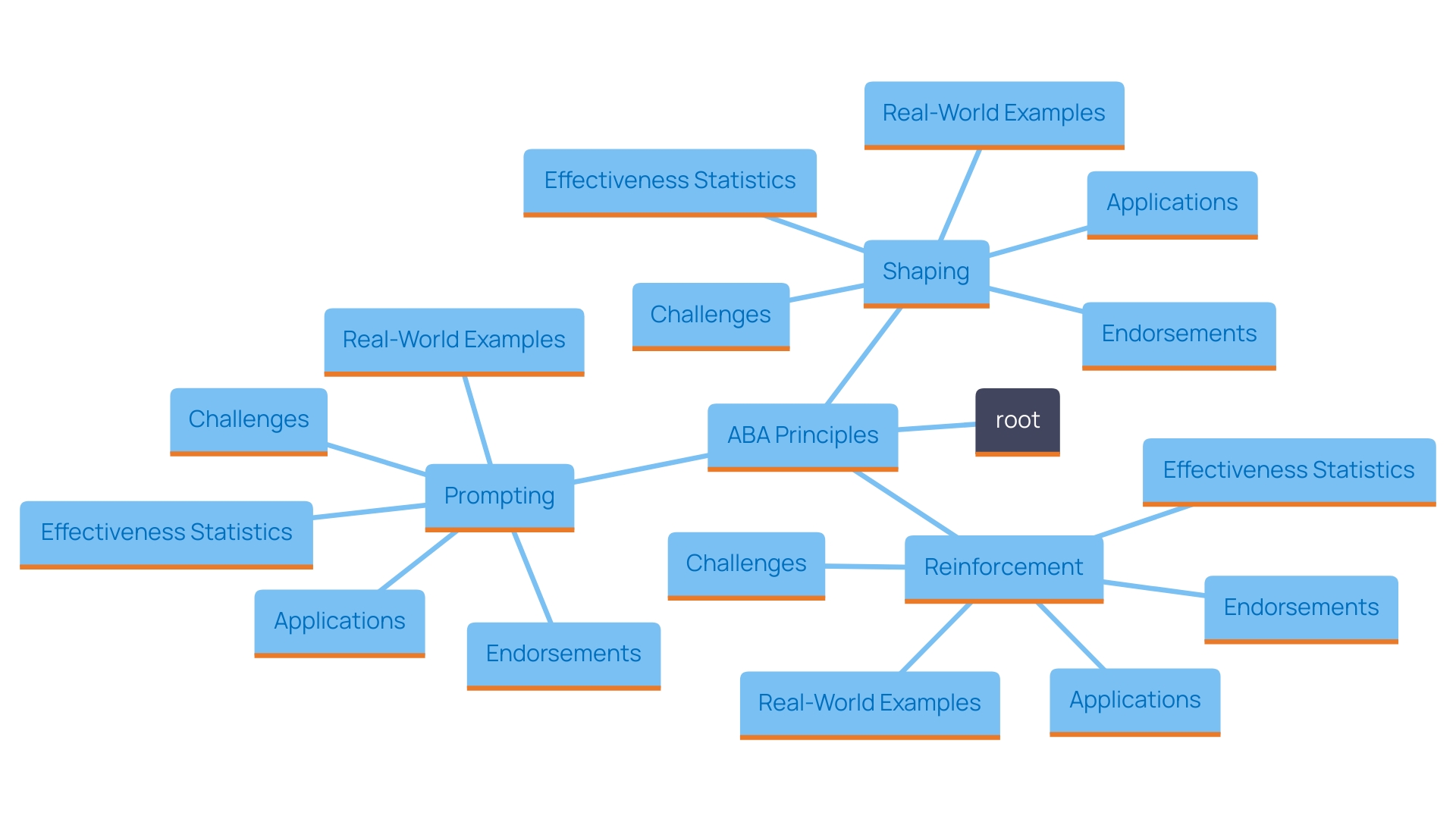
Key Techniques and Strategies in ABA Therapy
Key techniques in ABA therapy encompass several clearly defined methods that assist children in developing crucial abilities in a structured yet adaptable way.
-
Discrete Trial Teaching (DTT): This highly structured method involves breaking down abilities into small, manageable units. Each unit is taught individually, with clear instructions, prompts, and reinforcement to encourage the desired response. Research has demonstrated that DTT can significantly improve language and communication abilities, achieving impressive effect sizes nearing 1.5 for receptive and expressive language and communication capabilities. However, it is important to note that outcomes such as verbal IQ, nonverbal IQ, and motor abilities have shown no significant differences, indicating that DTT's effectiveness may vary depending on the targeted areas.
-
Natural Environment Teaching (NET): NET emphasizes teaching within natural settings, using everyday situations to promote learning and the generalization of skills. ABA therapists often highlight the benefits of this approach, as it can lead to more meaningful and lasting behavioral changes. For example, utilizing a young person's daily routines, such as mealtime or playtime, creates opportunities for spontaneous learning. Recent advancements in NET strategies continue to refine these methods, making them increasingly effective. As stated by Qian Yu, "The authors have no potential conflicts of interest to disclose," emphasizing the credibility of the findings.
-
Modeling: This technique involves demonstrating desired behaviors for the young one to imitate. By providing a clear example, young learners can better understand and replicate the targeted behavior. Modeling is particularly useful for teaching social and communication skills.
-
Shaping: This method involves gradually reinforcing successive approximations of a desired behavior, guiding the individual toward the final goal. This method is especially effective for complex behaviors that cannot be taught in a single step. By reinforcing small steps, young individuals can progressively achieve and master the desired behavior.
These techniques collectively enhance learning by making it engaging and relevant to each individual's context. Comprehending and utilizing these methods can enable parent advocates to enhance support for their offspring's development through ABA practices.
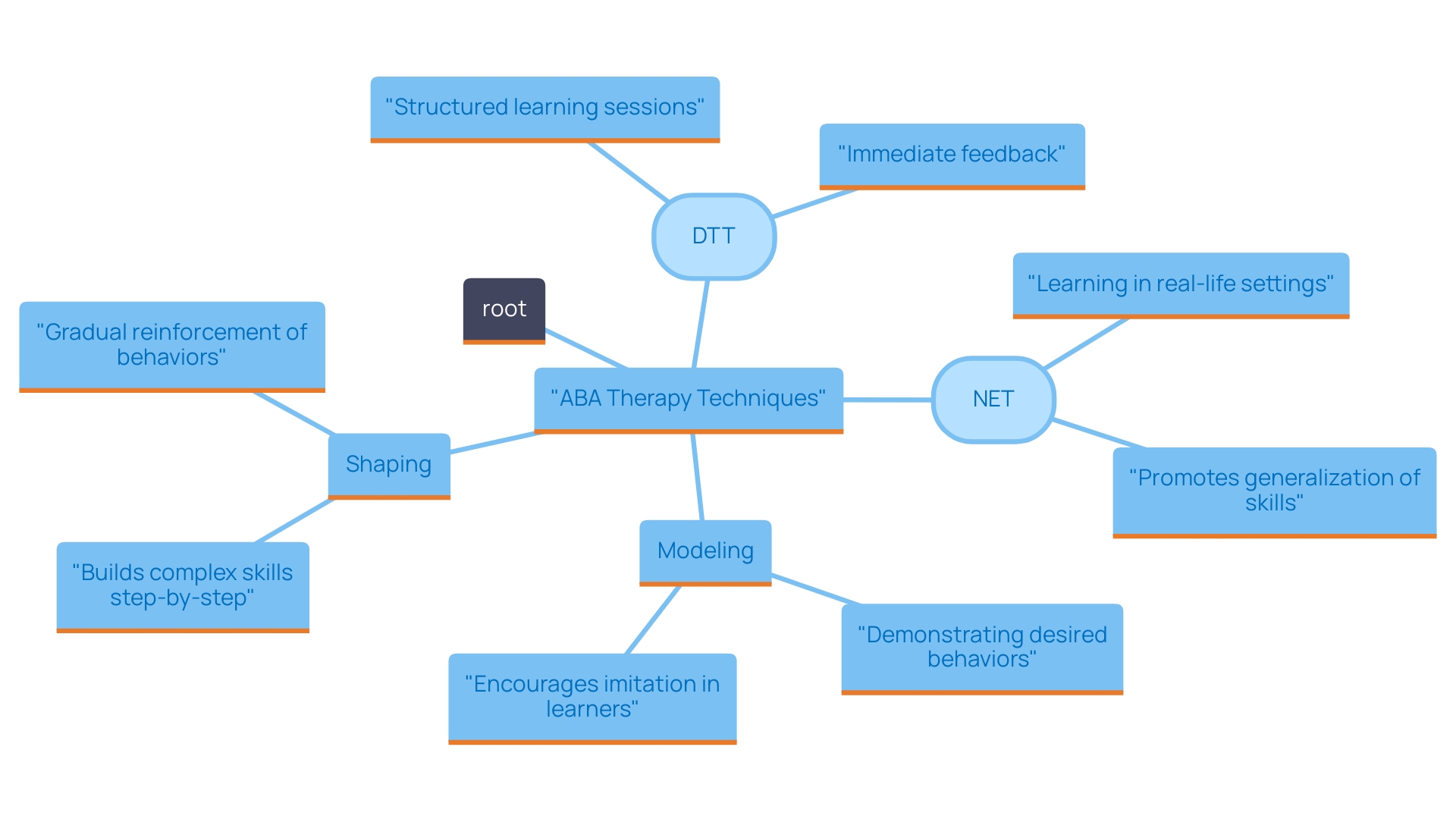
Implementing ABA Therapy: What to Expect and How to Set Goals
When starting ABA treatment, parents can expect a thorough assessment process aimed at identifying their child's distinct needs and strengths. This initial evaluation is crucial for developing an effective, individualized treatment plan. Regular sessions will feature direct engagement with a skilled therapist, concentrating on skill acquisition and behavior modification to foster meaningful progress.
A key component of ABA therapy is setting SMART goals—Specific, Measurable, Achievable, Relevant, and Time-bound. These goals provide clear and actionable targets, such as encouraging a young person to initiate conversations with peers at least three times a week. This method ensures that objectives are well-defined and attainable, promoting continuous assessment and refinement of strategies based on the individual's progress. The effectiveness of this approach is underscored by statistics showing that 76% of patients with multiple goals see upward trends in their achievements.
Moreover, personalized NETA programs in ABA therapy, as discussed in 'Personalized NETA Programs in ABA: How to Maximize Your Offspring’s Learning Potential,' highlight the importance of tailored strategies in enhancing youth development in real-world settings. By integrating these personalized approaches with SMART goals, parents can better support their offspring's learning journey.
Therapists emphasize the value of setting SMART goals. As noted, 'Analyzing collected data helps therapists evaluate intervention effectiveness and develop tailored strategies for individual needs.' This systematic approach not only promotes accountability but also permits ongoing adjustments, ensuring the best possible results for your offspring in 2024 and beyond.
During ABA sessions, parents can anticipate an organized setting where their young one actively engages in educational activities designed to meet their personal objectives. Therapists will frequently convey progress and modify strategies as required, ensuring that the treatment stays aligned with the individual's changing needs.
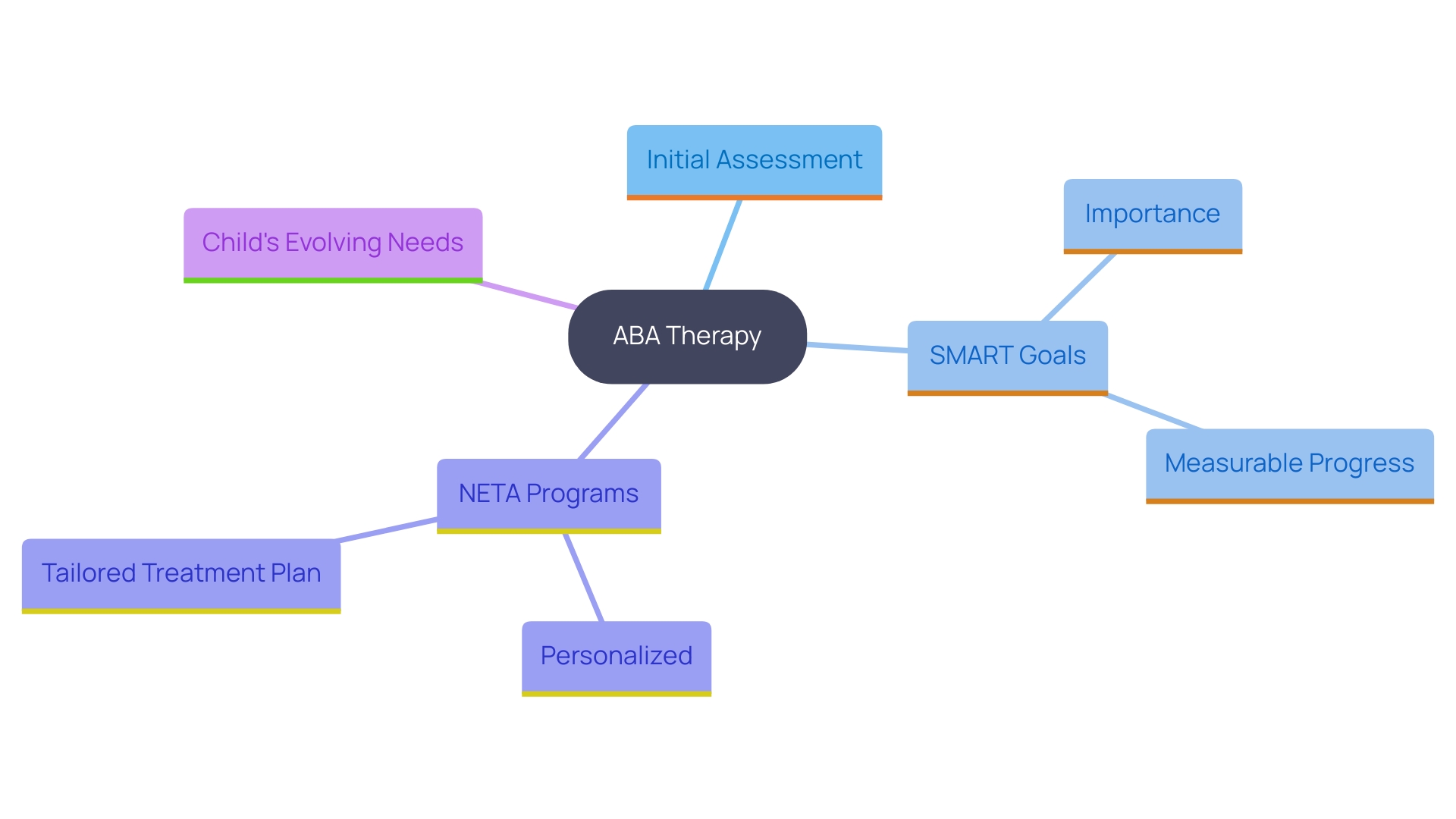
Evidence and Effectiveness of ABA Therapy
Research consistently highlights the transformative impact of ABA therapy on youth with autism and ADHD. For instance, Liu et al.'s study involved 55 participants undergoing Picture Exchange Communication System (PECS) sessions daily for six months, with outcomes measured using the C-PEP. This study, which followed rigorous methodologies, demonstrated notable improvements in communication and social skills. Tracy A Becerra-Culqui, PhD, MPH, OTR/L, emphasizes the systematic approach of such studies, enhancing their reliability.
While moderate levels of heterogeneity across studies were noted, with I=55% and p=0.05, this variability underscores the importance of considering individual circumstances when evaluating outcomes. Nevertheless, the overall positive trend suggests that early ABA interventions can significantly alter a young individual's developmental path, fostering better behavioral and communicative outcomes.
Additionally, many insurance companies acknowledge ABA as a medically necessary treatment, providing financial assistance to families. It is crucial for parents to check with their insurance providers regarding specific coverage details, as these can vary. By understanding and utilizing these resources, parents can make a significant impact in obtaining and maintaining support for their offspring, ultimately improving their developmental journey.
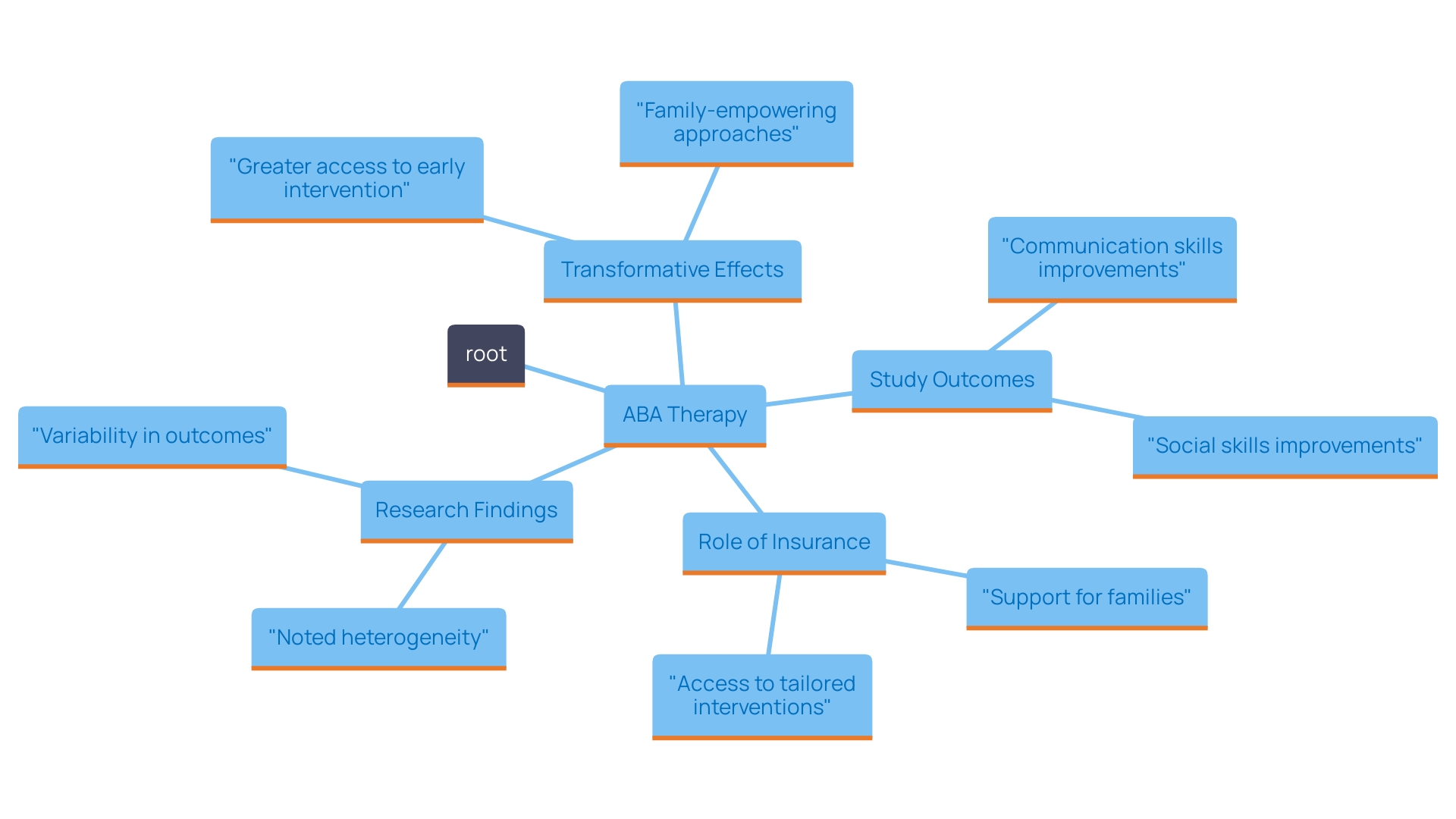
Personal Experiences: Insights from the ABA Community
Personal narratives from families who have participated in ABA treatment frequently reveal its transformative effects on both children and their families. A compelling example is the case of Adult B, a 30-year-old male who started ABA treatment to enhance communication, follow routines, and tolerate change. Initially hindered by Covid shutdowns, Adult B's progress in therapy enabled him to improve his communication skills and engage more openly with his parents, ultimately preparing him to transition into a structured day program.
Statistics further support these positive outcomes. For instance, a recent study found that:
- 28% of the 154 participants who received ABA for 24 months achieved a full ABA dose.
- 58% reached the Adaptive Behavior Composite (ABC) Minimal Clinically Important Difference (MCID) between baseline and 12 months.
- 54% achieved it by 24 months.
- Additionally, 57 youngsters showed a significant improvement in their Vineland ABC scores over 24 months.
Parents often share heartfelt testimonials about their offspring's newfound ability to communicate needs effectively or navigate social situations with greater confidence. These stories underscore the importance of patience and collaboration with therapists. To further support their journeys, parents can engage with community forums and local support groups, such as the ABA Parent Network or local autism societies, which provide valuable resources, encouragement, and shared experiences. Engaging with these communities fosters a supportive network that champions the success of ABA therapy, empowering parents to advocate effectively for their children.
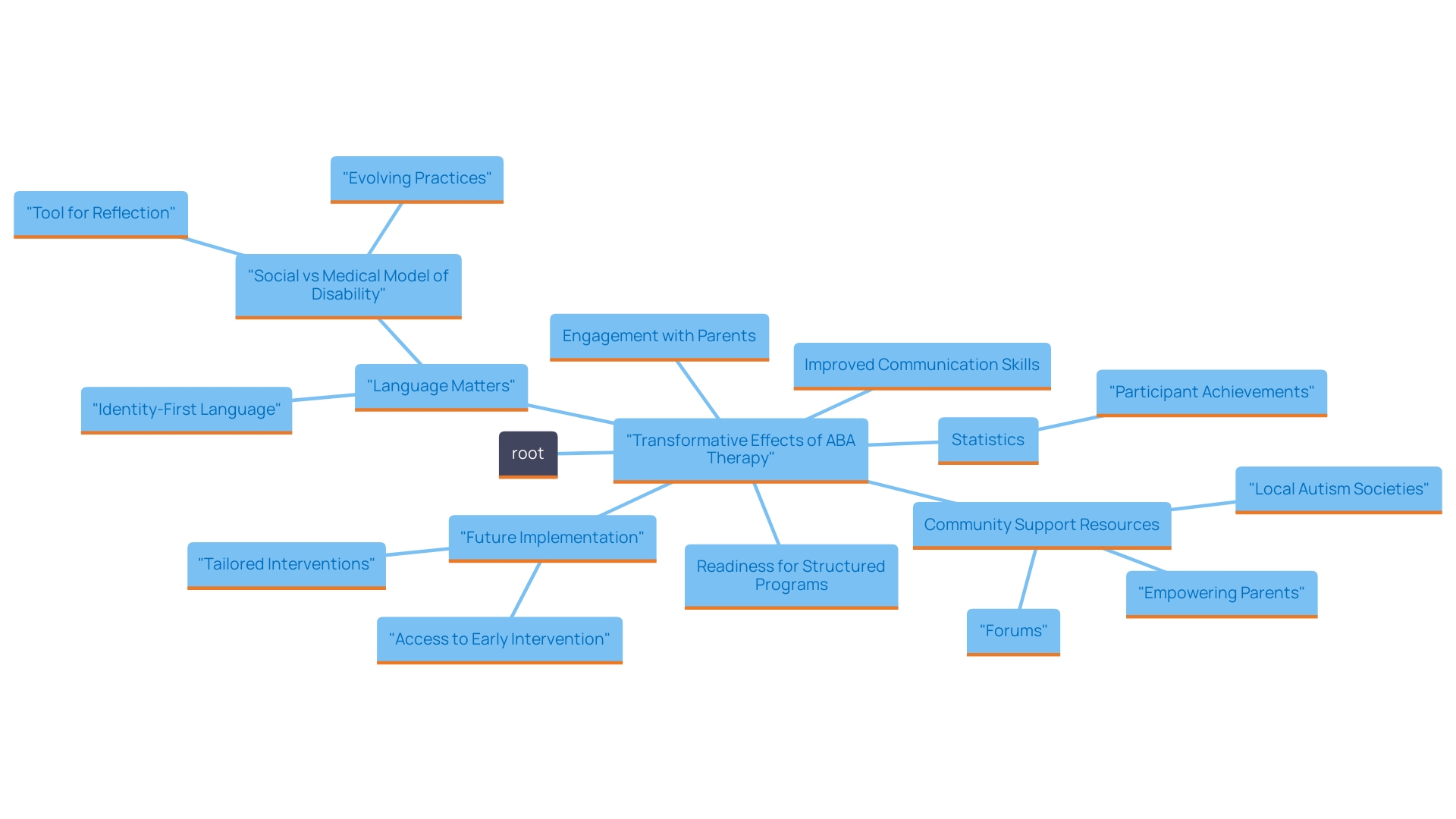
Conclusion
Applied Behavior Analysis (ABA) stands out as a powerful, evidence-based approach that has transformed the lives of countless children with autism and ADHD. By harnessing techniques like Discrete Trial Teaching, Natural Environment Teaching, and shaping, ABA provides a structured yet flexible framework that fosters meaningful behavioral changes. The documented success rates underscore the effectiveness of these methods, with many children demonstrating significant improvements in communication, social skills, and overall behavior.
As parents embark on this journey, understanding the importance of personalized treatment plans and SMART goals is crucial. These elements ensure that therapy is tailored to meet each child's unique needs, promoting continuous growth and adaptation. The commitment to regular assessment and open communication between therapists and families further enhances the potential for success, making the therapeutic experience a collaborative effort.
The positive impact of ABA therapy extends beyond individual achievements; it resonates within families and communities. Personal stories from those who have participated in ABA highlight not only the progress made by children but also the empowerment felt by parents as they advocate for their loved ones. By engaging with support networks and leveraging available resources, families can navigate the challenges of therapy more effectively, fostering an environment where their children can thrive.
In conclusion, ABA therapy represents a beacon of hope and possibility for children facing developmental challenges. By embracing its principles and techniques, parents can unlock their children's fullest potential, paving the way for a brighter future filled with opportunities for growth and success.




